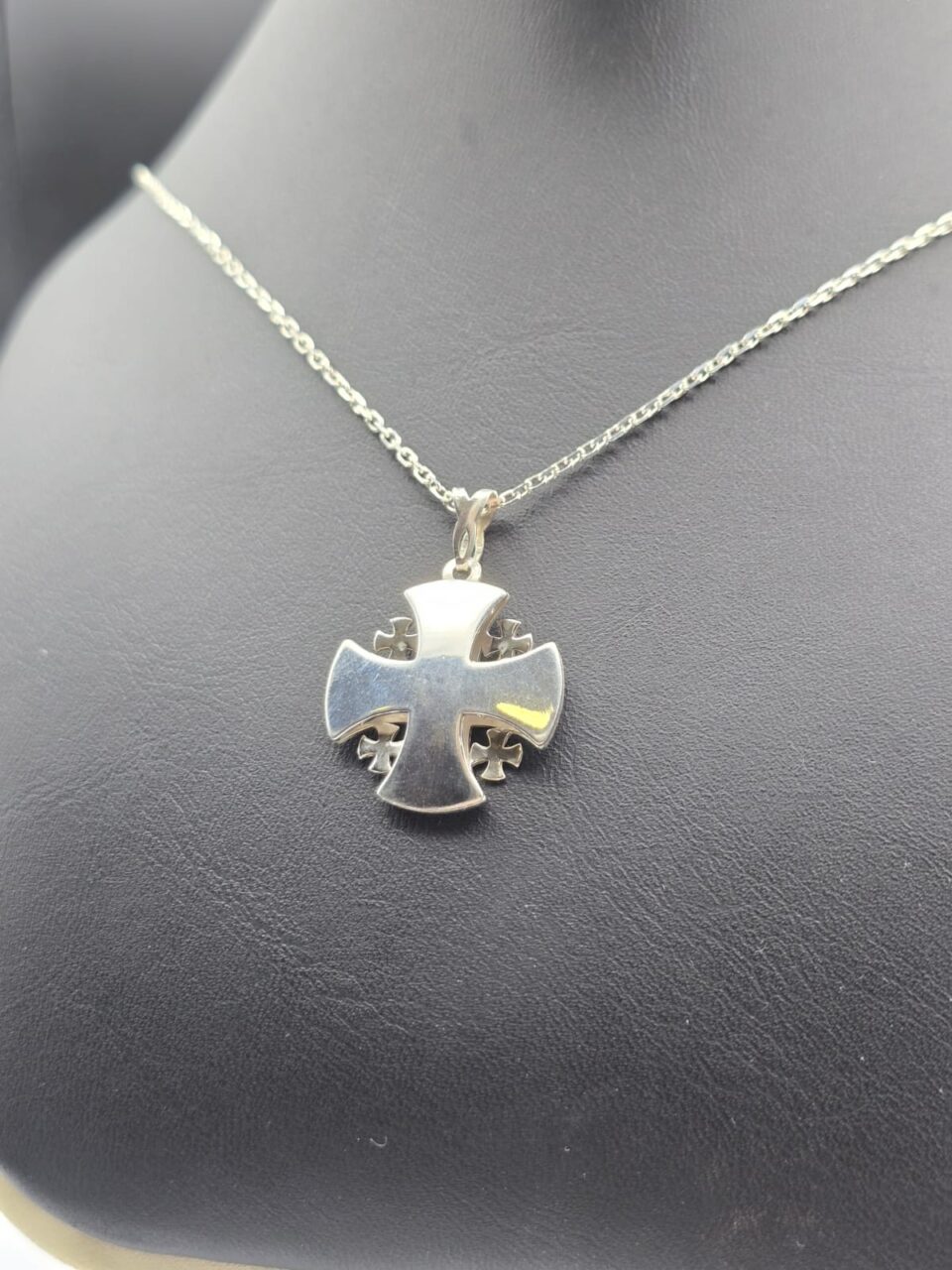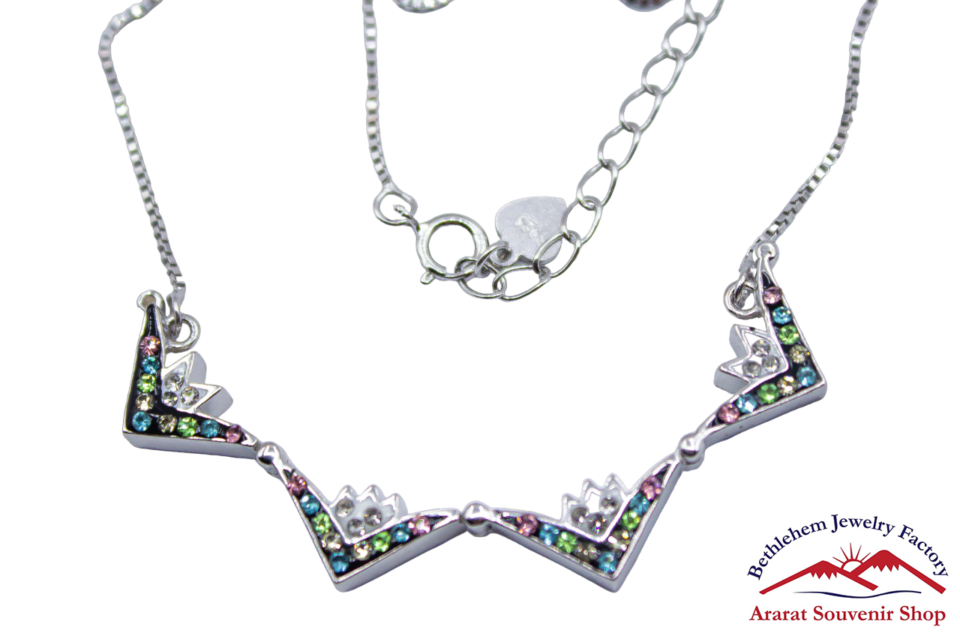Shiny French Jerusalem Crusader Cross 24mm
What is the French Jerusalem Cross?
The French Jerusalem Cross is a symbol of faith and heritage, enriched with historical significance. Often used in jewelry and religious artifacts, it embodies values of compassion and spirituality.
Craftsmanship and Design
Each piece of the French Jerusalem Cross is meticulously crafted, showcasing intricate designs that reflect the essence of its origins. The cross’s blend of artistic flair and cultural meaning makes it a cherished item for many.
Why Choose the French Jerusalem Cross?
Opting for the French Jerusalem Cross is not just a choice of decoration; it’s an embrace of a rich tradition. This piece resonates with those who value history, spirituality, and timeless design in their personal collections.
Introduction to the French Jerusalem Cross
The French Jerusalem Cross, a distinctive emblem steeped in history, serves as a variation of the broader Jerusalem Cross, primarily symbolizing the Christian faith and its enduring legacy. Tracing its origins back to the medieval period, this cross features a central cross surrounded by four smaller crosses, each representing the four corners of the world and the Gospel’s message being spread globally. Unlike other variations of the Jerusalem Cross, which may have different designs or interpretations, the French version is notably associated with the Crusades and the influence of French nobility in the Holy Land.
The significance of the French Jerusalem Cross goes beyond its aesthetic appeal. Its origins are deeply intertwined with the actions of Christian knights during the Crusades, who sought to reclaim the Holy Land and establish Christian influence. In this context, the cross became a representation of faith, courage, and the struggles faced during that tumultuous period. Moreover, it developed strong ties with French identity, reflecting the beliefs and values prominent in medieval France.
Historical Background and Development
The French Jerusalem Cross has a rich historical background, tracing its origins to the Crusades of the 11th and 12th centuries. This period marked a significant moment in the interaction between the Latin West and the Eastern Christian world. The cross, characterized by its distinct design of a large central cross and four smaller crosses in each quadrant, symbolized the faith and aspirations of Christian crusaders who aimed to reclaim the Holy Land. It represented not only a spiritual commitment but also a political emblem of the Kingdom of Jerusalem, established during the Crusades.
As the crusaders returned to France, they brought back the Jerusalem Cross, which gradually became a prominent symbol within the French Christian community. Key historical figures, such as Godfrey of Bouillon, the first ruler of the Kingdom of Jerusalem, played a vital role in the promotion of this emblem. In the ensuing centuries, the cross evolved to encompass various interpretations, often reflecting the shifting political and religious landscapes of Europe. It became associated with various military orders and religious institutions, further embedding it in the cultural fabric of France.
The iconography of the French Jerusalem Cross continued to develop through the late medieval period and into the Renaissance. It was embraced by different Christian sects and even by some secular organizations. The cross was not only a religious symbol but also a manifestation of national identity and pride. By the 19th century, the French Jerusalem Cross regained prominence as a historical and cultural symbol, appealing to both nationalists and religious groups who recognized its significance as a representation of shared values. This continued evolution highlights how deeply the French Jerusalem Cross is woven into the legacy of France and its historical relationship with the broader Christian world.
Symbolism and Meaning
The French Jerusalem Cross is a deeply significant emblem that embodies rich layers of symbolism and meaning within its intricate design. Central to the cross is the large Latin cross, which represents the resurrection of Jesus Christ and serves as a key symbol of Christianity. This primary element is accompanied by five smaller crosses, each situated in the quadrants formed by the larger cross. The inclusion of these smaller crosses has profound implications, each signifying one of the five wounds of Christ, thereby reiterating the theme of sacrifice and redemption that permeates Christian theology.
Furthermore, the arrangement of the five smaller crosses symbolizes the notion of spreading the Gospel to the four corners of the earth, reflecting the Christian mandate to evangelize and share the message of salvation globally. This theme is particularly pertinent in the context of the First Crusade, from which the French Jerusalem Cross emerged, as it represented both a rallying cry for Christians and a reminder of their mission to propagate their faith. The emotive power of the cross lies in its ability to connect believers with the foundational events of Christian history, emphasizing the impact of Christ’s passion.
The cross also carries cultural significance beyond its religious context. As a national symbol for the Kingdom of Jerusalem, it integrates multilingual heritage and cultural exchanges that occurred during the Crusades. In contemporary interpretations, the French Jerusalem Cross conveys a sense of unity among Christians, serving as a reminder of their common beliefs and the historical narrative that binds them. The spiritual implications resonate not only within religious communities but also foster interfaith dialogue, emphasizing common values that transcend denominational boundaries. Each element of this emblem, therefore, embodies an invitation to reflect on both individual faith journeys and collective spiritual aspirations.
The French Jerusalem Cross in Contemporary Society
The French Jerusalem Cross continues to hold significant relevance in contemporary society, manifesting in various forms across art, architecture, jewelry, and religious practices. This emblem, steeped in history, is often embraced by artists who use it to convey themes of faith, heritage, and identity. In galleries and public installations, the cross serves as a powerful symbol, often inviting dialogue about its medieval roots and its portrayal in modern contexts.
In architecture, the French Jerusalem Cross is sometimes integrated into church designs and memorials. It not only adorns the exterior of places of worship but also finds its way into civic and community structures, symbolizing hope and unity among diverse populations. These architectural representations serve as a reminder of the cross’s historical significance while also emphasizing its role in the spiritual life of contemporary communities.
The usage of the French Jerusalem Cross in jewelry is also notable, with artisans crafting pieces that celebrate this iconic symbol. Today’s wearers often associate the cross with personal faith, resilience, and commitment to Christian values. Such jewelry not only has aesthetic appeal but also represents a tangible connection to tradition and shared beliefs among modern Christians.
Religious ceremonies have also seen the integration of the French Jerusalem Cross, particularly during events that emphasize the themes of pilgrimage and devotion. It is used in baptisms, confirmations, and other significant rites, reinforcing its association with spiritual journeying and a sense of belonging within the Christian community. The enduring legacy of the French Jerusalem Cross remains alive as it resonates with various groups, uniting them through shared symbols of faith and culture.
Conclusion and Reflection
Throughout this discussion, the French Jerusalem Cross has been examined through various lenses, including its storied history, cultural significance, and symbolism. From its inception during the Crusades to its esteemed place in contemporary society, this emblem continues to resonate deeply with those who recognize its historical context and spiritual implications. The cross, characterized by its distinctive design of five crosses, serves not only as a reminder of the Christian faith but also as a symbol of the complexities surrounding the interactions between cultures and religions over centuries.
Significantly, the French Jerusalem Cross represents more than mere iconography; it embodies the confluence of faith, history, and identity. The variation in its meaning across different groups highlights the rich tapestry of narratives embedded within the cross. For many, it is a testament to devotion, sacrifice, and the enduring pursuit of peace rooted in religious tradition. In modern times, this emblem has found new relevance, encouraging dialogue about unity and the shared human experience amid diversity.
As we reflect on the significance of the French Jerusalem Cross, it is imperative for readers to consider its relevance in their lives. How does the cross inspire personal beliefs, community connections, or ethical values? The interpretive journey surrounding this symbol invites individuals to engage deeply with its history while exploring its potential to foster understanding among varied cultures in today’s global landscape. Furthermore, the cross’s historical evolution offers valuable insights into the ongoing dialogue regarding identity and heritage.
In conclusion, the French Jerusalem Cross stands as a powerful symbol that transcends its visual representation, urging us to delve into the intricate narratives it has both shaped and been shaped by. Encouraged to explore its layers further, readers are invited to recognize the cross not just as a historical artifact, but as a living emblem that continues to influence and inspire.













Reviews
There are no reviews yet.